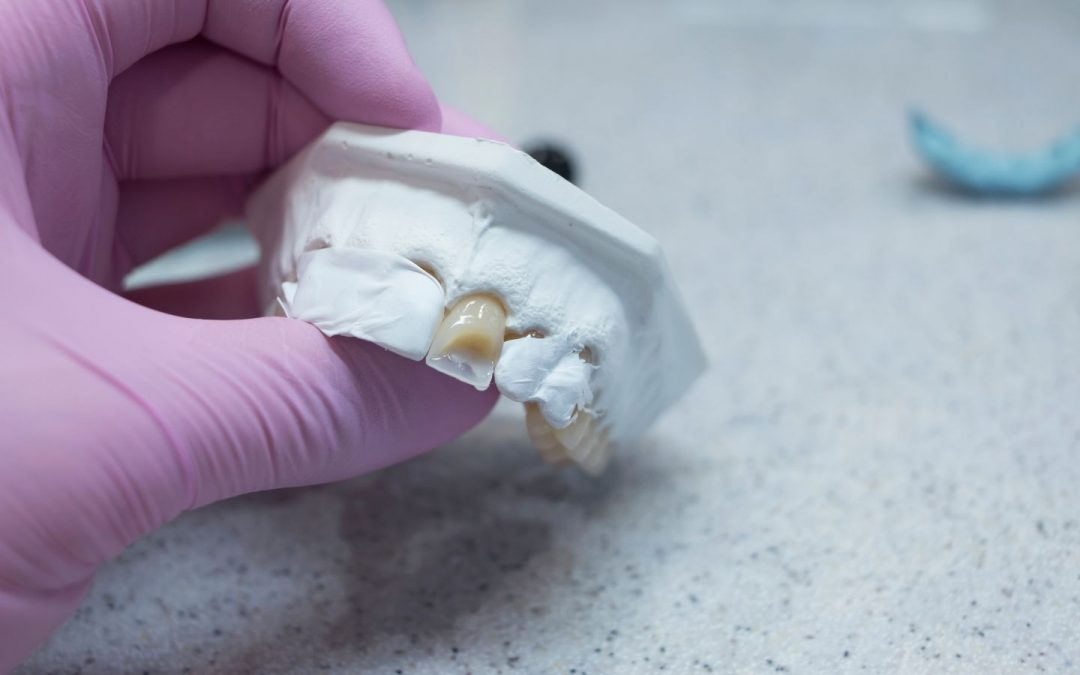Preserving your natural tooth is our top priority at Danville Family Dentistry. Inlays and onlays are high-quality alternatives to dental fillings and crowns. When a cavity is too big, or there’s a large area of decay in the molars, an inlay or onlay is an easy solution to your pain.
An inlay or onlay treatment is chosen based on the extent of tooth damage and location.
Onlays
An onlay is one option when a single tooth needs significant restoration. Onlays are always made individually for you in a specialized laboratory. Unlike a classic crown, the dentist uses onlays when one or more molar edges are damaged. An onlay allows the dentist to rebuild and reconstruct your tooth’s chewing surface. It protects the weakened tooth walls and prevents fractures.
An onlay is like a crown, except that it’s a less aggressive treatment, and it doesn’t cover the entire tooth. It’s kind of like a hat that only covers the top of a tooth. Onlays are sometimes a more affordable solution when a crown isn’t needed, covering only the tooth’s cusp and created in one single, solid piece.
Inlays
An inlay is also created in one single, solid piece. It’s a great option when a cavity is too large for a traditional dental filling.
In contrast to inlays, dental fillings are initially soft and malleable during processing. They are poured directly into the cavity in your tooth, and then the material hardens. On the other hand, an inlay is fabricated to fit the exact shape and size of a cavity, and then it’s cemented into place.
Ceramic Inlays and Onlays
In modern aesthetic dentistry, ceramics are used almost exclusively for the production of inlays. Due to their customizable individual tooth color, ceramic inlays can’t even be distinguished from your natural teeth after treatment. They look so natural that even experts hardly notice a visual difference between a ceramic inlay and your real teeth. Additionally, the durability of ceramic inlays is exceptionally high.
Ceramic inlays are the most advantageous option from an aesthetic point of view, especially when larger tooth defects need to be treated. Also, inlays are long-lasting, as they show little material wear despite excellent chewing stability.
Ceramic inlays and onlays not only have high color stability but are also biologically compatible. That means your body doesn’t detect the ceramic as a foreign object, trying to damage it and causing infection. Your body recognizes ceramic as a natural part of your gum and mouth tissue.
Another advantage of ceramic inlays is that they do not affect your taste, and they aren’t sensitive to temperature.
Gold Inlays
Gold inlays not only withstand heavy chewing and teeth grinding, but they’re also soft enough at the same time not to damage the opposite tooth through abrasion. A gold alloy is used for the precious metal inlay, which is when gold is mixed with other metals. Inlays made of gold are fixed with a cement that was specially developed for dentistry.
Advantages of Inlays and Onlays
- Usually suitable for everyone
- Only requires local anesthesia
- Durable
- Stable
- Sometimes possible in one appointment
Don’t put off important dental work. Call us today at 317-745-4400, so we can discuss your options. We can’t wait to hear from you.
Are you on Facebook? We are, too! Let’s be friends!
Disclaimer: The information included in this article is for educational purposes only. It should not be used as a substitute for professional medical advice, diagnosis or treatment.


 (317) 745-4400
(317) 745-4400
